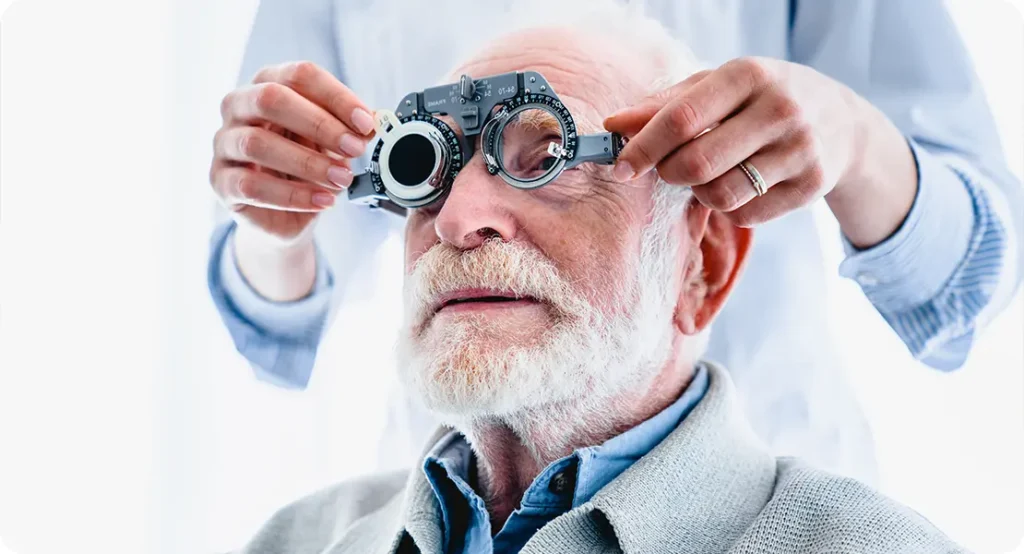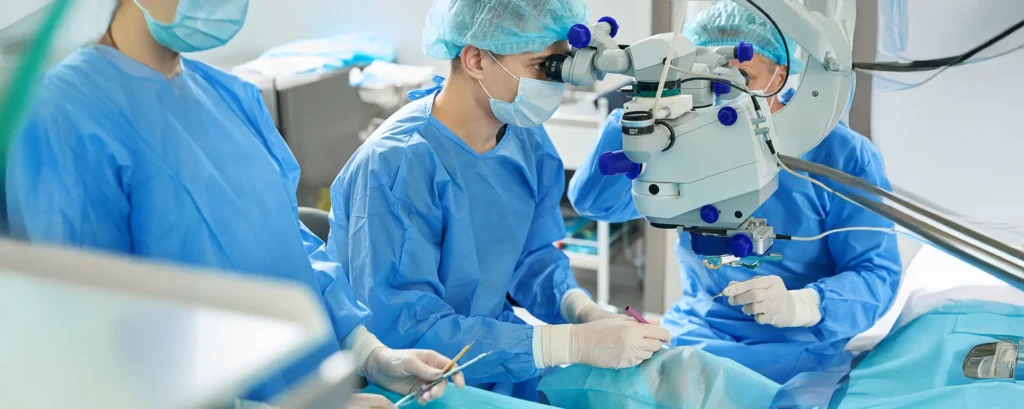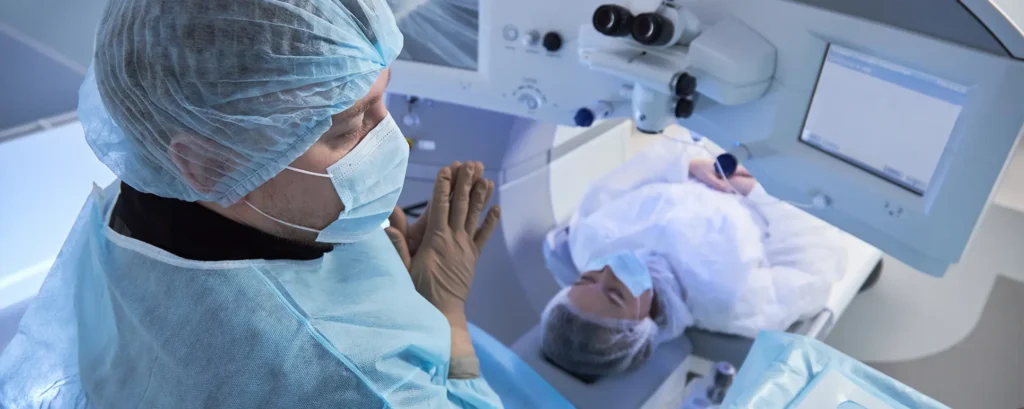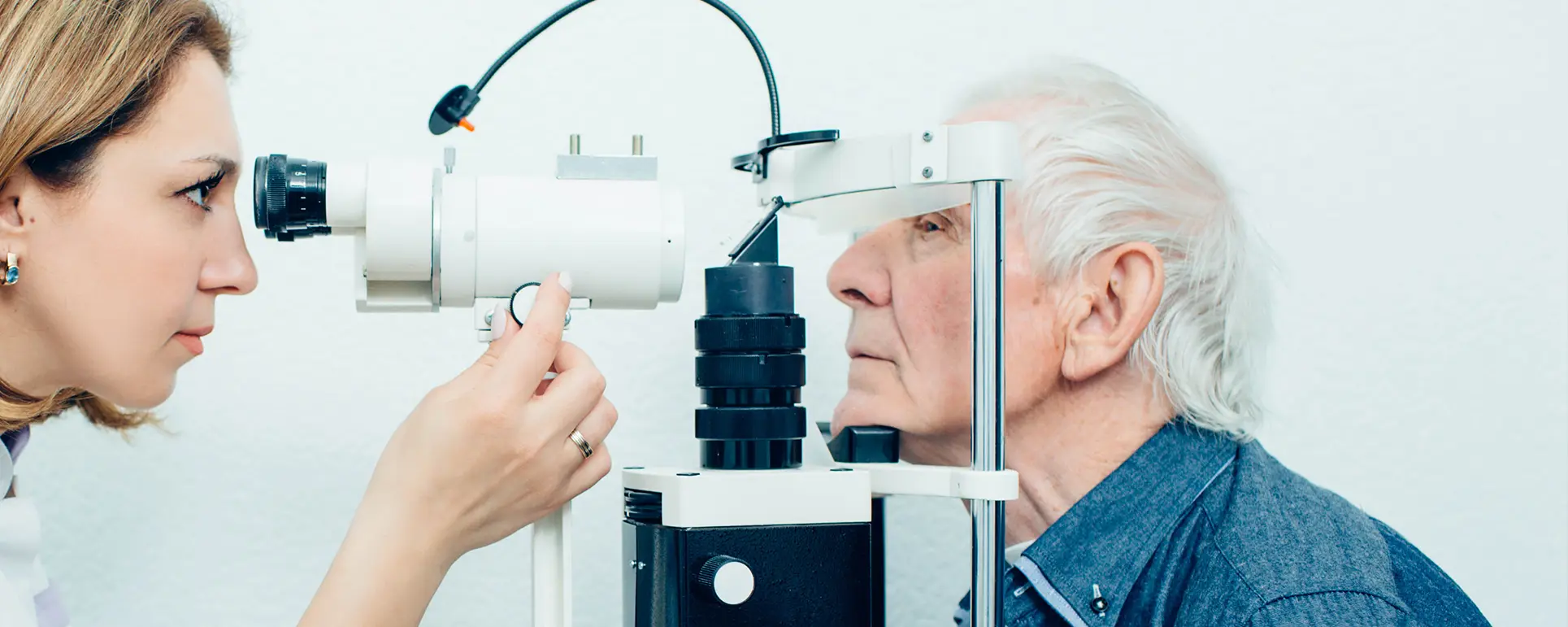If you take dutasteride—whether for benign prostatic hyperplasia (BPH) or as part of a hair-loss plan—you’ve probably searched for side-effects and stumbled on questions about eyesight. Cataracts are common with age, and it’s natural to ask: does dutasteride make them more likely, can it speed them up, and would it complicate cataract surgery if you ever need it? In this guide I’ll walk you through those questions in plain English. You’ll get a balanced look at what research does (and doesn’t) show, why some men on BPH medicines need special mention before cataract surgery, and how to plan safely so there are no surprises on the day.
Here’s the short version before we dive deeper: there’s no strong evidence that dutasteride itself causes cataracts. Cataracts are driven mainly by age, genetics, UV exposure, smoking, diabetes and a handful of medications (long-term steroids being the classic example). That said, dutasteride often sits in the same medicine cupboard as alpha-blockers like tamsulosin (they’re frequently prescribed together for BPH), and tamsulosin is important for your eye team to know about because of a known surgical issue called intraoperative floppy iris syndrome (IFIS). You’ll also see why your meibomian glands (the tiny oil glands on your eyelids) and the tear film deserve a check-up when you use long-term therapies that shift androgen signalling.
What exactly is dutasteride?
Dutasteride belongs to a class of medicines called 5-alpha-reductase inhibitors (5-ARIs). Its job is to block the conversion of testosterone into dihydrotestosterone (DHT)—the more potent androgen that drives prostate growth and contributes to male-pattern hair loss. By reducing DHT, dutasteride can shrink the prostate over time and improve urinary symptoms, and in dermatology settings it’s sometimes used off-label for hair-loss conditions when first-line treatments aren’t enough.
Two practical points matter for your surgical planning:
- It’s long-acting. Dutasteride has a long half-life (several weeks), which means it hangs around in the body for a good while even if you stop it. That makes “quick washout” before surgery impractical and usually unnecessary.
- It’s often combined. Many men take dutasteride with an alpha-1 blocker such as tamsulosin. Tamsulosin relaxes smooth muscle in the prostate and bladder neck—great for urinary flow, but it has well-described eye implications (more on this later).
Cataracts 101 (the fast refresher)
A cataract is the clouding of your eye’s natural lens. Most are age-related—think of it as a slow “yellowing and stiffening” of the lens proteins, driven by life’s accumulated oxidative stress. Typical symptoms include glare, haloes around lights, colours that look duller, and a general feel that your glasses never seem quite right any more. Surgery removes the cloudy lens and replaces it with a clear intraocular lens (IOL). Outcomes are excellent for most people.
Key risk factors include age, family history, UV exposure, smoking, diabetes, steroid use (especially long-term oral or high-potency steroid exposure), certain eye injuries, and rarely some genetic conditions. Medicines get scrutinised too, but only a handful have consistent evidence of a meaningful cataract link.
Does dutasteride cause cataracts?

The honest answer, based on the present landscape: there isn’t strong, consistent human evidence that dutasteride causes cataracts or speeds them up. If you look across what’s been published so far, you’ll mainly find:
- Mechanistic reasoning about androgen signalling, the tear film and lens metabolism.
- Isolated case signals or pharmacovigilance mentions that raise a hypothesis but don’t prove cause and effect.
- Much clearer evidence for other drug classes (for example, steroids) and for lifestyle or medical risks like smoking and diabetes.
In practice, for most patients the baseline age-related risk dwarfs any theoretical effect from dutasteride. So if you’re noticing visual changes and you’re in your 50s, 60s or beyond, the most likely explanation is simply ageing of the lens, not your BPH or hair-loss tablet.
Why are androgens even part of the eye conversation?
Because androgens such as DHT help stabilise the tear film by supporting the meibomian glands—the tiny oil factories along your eyelid margins. These glands secrete the oily top layer of the tear film that slows evaporation. If androgen signalling is reduced, evaporative dry eye can creep in: burning, fluctuating vision, and that “gritty by 3 p.m.” feeling. Not everyone on a 5-ARI experiences this, but some do, and it matters for pre-operative accuracy in cataract surgery.
Why pre-operative accuracy? Because before surgery your team measures your eye in exquisite detail to choose the best lens power. A stable, healthy tear film makes those measurements more reliable. If dryness is present, they’ll typically treat it first (warm compresses, lid hygiene, lubricant gels, possibly short stints of anti-inflammatory drops) and then repeat measurements so your outcome targets—distance, near, blended vision, or astigmatism correction—are spot on.
To be clear: dry eye is not a cataract, and it doesn’t mean dutasteride damaged your lens. It’s just one way the “androgen conversation” affects eye comfort and measurement quality.
The bigger picture: what actually drives cataracts?
Most cataracts result from protein changes in the lens linked to oxidative stress and glycation over time. That’s why you see them more with:
- Ageing
- Diabetes
- Smoking
- High UV exposure
- Long-term steroid use
- Certain systemic and genetic disorders
When you’re asking “is my medicine to blame?”, it’s smart also to step back and check the basics. If you stop smoking, protect your eyes from UV, get your diabetes under tight control, keep blood pressure and lipids in a healthy range, and eat a genuinely colourful, plant-rich diet, you’re doing far more for your lens than tweaking a 5-ARI would likely achieve.
Dutasteride vs tamsulosin: a critical distinction for surgery
You’ll often see dutasteride prescribed alongside tamsulosin (or another alpha-1 blocker) for BPH. Tamsulosin has a well-recognised effect during cataract surgery called intraoperative floppy iris syndrome (IFIS). The iris becomes floppier and tends to billow; the pupil may constrict; and the iris may be more prone to prolapsing through the surgical incisions. Experienced cataract surgeons handle this routinely with modified fluidics, iris hooks or pupil expansion rings, careful use of viscoelastic, and strategic phacoemulsification techniques.
Two important points if you’ve ever taken tamsulosin:
- Tell your surgeon, even if you stopped ages ago. The effect can persist long after you discontinue it, so honesty here avoids surprises in theatre.
- Stopping it briefly rarely solves anything. For most people it’s safer to keep their urinary symptoms well managed and let the surgeon plan for IFIS if relevant.
By contrast, dutasteride on its own doesn’t carry the same iris warning. Still tell your team all your medicines, but understand that in cataract surgery tamsulosin is the headline, not dutasteride.
Should you stop dutasteride before cataract surgery?

For the majority of patients, no—and in any case, “stopping” dutasteride rarely creates a true washout because of its long half-life. More importantly, there isn’t good evidence that continuing dutasteride worsens cataract surgery or harms healing.
Here’s a sensible plan many teams follow:
- List every medicine and supplement you take, with doses and how long you’ve been on them.
- Flag any alpha-1 blockers (tamsulosin, alfuzosin, doxazosin, terazosin, silodosin) clearly.
- Optimise the tear film beforehand if you have dry eye symptoms or signs on examination.
- Carry on with dutasteride unless your urologist has a specific reason to pause it.
Never change prescription medication without speaking to your prescriber. For BPH especially, sudden changes can send urinary symptoms the wrong way.
Anaesthetic and medication considerations
Cataract surgery is typically done with local anaesthesia (eye-drop anaesthetic ± a small numbing injection) and a tiny dose of sedation if you’re anxious. The medicines commonly used in theatre—like topical anaesthetics, povidone-iodine for antisepsis, intracameral antibiotics, and post-operative anti-inflammatory drops—don’t have known clinically significant interactions with dutasteride.
If you’re on a long list of other medicines (blood thinners, blood pressure tablets, diabetes treatments, antidepressants), your pre-assessment nurse or anaesthetist will check for interactions. The main cataract-specific conversations tend to focus on:
- Blood thinners
- Steroid use
- Alpha-1 blockers
Dutasteride itself rarely headlines the anaesthetic plan.
What to expect if you proceed to surgery

Think of the journey in three parts.
1) Pre-operative planning
You’ll have scans that map your eye’s curvature and length (biometry), images to characterise your cornea and astigmatism, and a chat about visual targets. If you’re keen to reduce glasses, you’ll discuss toric lenses (for astigmatism), monovision/blended strategies, or multifocal/trifocal IOLs. If your tear film is unstable, you’ll likely treat that first and repeat measurements.
2) Day of surgery
Most modern cataract procedures take 10–20 minutes. You’ll feel pressure and see bright lights, but no sharp pain. If IFIS is a possibility (because of past or present tamsulosin), your surgeon will have extra tools ready. Either way, expect a tiny incision, ultrasound that breaks and removes the cloudy lens, and insertion of your new IOL. Stitches are rarely needed.
3) Post-operative healing
You’ll go home the same day with a schedule of drops (typically an antibiotic for a short course and anti-inflammatories for a few weeks), plus a plastic shield for night-time at first. Vision often improves within days, though the first 24–48 hours can be a bit hazy or glary. Most people are back to normal activities quickly; your team will advise about swimming and heavy lifting.
Does dutasteride affect post-op healing?
There’s no robust signal that dutasteride delays normal cataract wound healing or raises infection or inflammation risk. If anything feels different—it’s usually the dry eye angle we talked about: the combination of pre-existing evaporative dryness plus the temporary disruption that all eyes experience after surgery. That’s manageable and typically short-lived with the right regimen.
Practical checklist for patients on dutasteride
- Keep an up-to-date medication list.
- Mention any dry eye symptoms.
- Ask about timelines for driving.
- Be clear about your glasses goals.
- Bring sunglasses for recovery and long-term UV protection.
- Don’t stop dutasteride on your own.
When to get your eyes checked
If you’re over 55, a regular sight test is sensible even if you feel fine. Book sooner if you notice any of the following:
- Trouble with night driving, glare, or haloes
- Colours that look washed out
- Frequent spectacle changes without real clarity
- Double vision in one eye
- A sudden drop in vision (urgent)
Special scenarios
Hair loss use – Same considerations apply; the IFIS risk mainly comes from alpha-1 blockers, not dutasteride alone.
Combination therapy – Declare it; surgeons adapt technique for IFIS if tamsulosin is involved.
Diabetes – Aim for good glucose control; it helps lens, cornea, and retina.
Blood thinners – Usually continued; your surgeon will check individually.
Putting risk in perspective
People understandably worry about medicines and eyesight, but it helps to keep the numbers and mechanisms in context. Age and oxidative stress remain the main cataract drivers. Dutasteride is not in the shortlist of drugs strongly linked with cataracts. Tamsulosin is the bigger surgical factor. Dry eye is common and manageable. The key is disclosure and preparation, not stopping treatment without guidance.
Frequently Asked Questions
1) Can dutasteride directly cause cataracts?
There’s no strong clinical evidence that dutasteride directly causes cataracts in humans; most cataracts are age-related or due to other medical and lifestyle factors. If you have cataract symptoms while on dutasteride, the most likely explanation is simply age-related lens changes that would have occurred anyway.
2) I take dutasteride and tamsulosin together—should I worry about cataract surgery?
You shouldn’t worry, but you must tell your cataract surgeon and pre-assessment nurse about both medicines, including if you’ve taken tamsulosin in the past. Tamsulosin is linked with intraoperative floppy iris syndrome (IFIS), which surgeons can handle safely once they know to prepare for it.
3) Should I stop dutasteride before my operation?
For most patients the answer is no. Dutasteride has a long half-life, so stopping it shortly before surgery doesn’t clear it from your system. There’s also no strong reason to pause it purely for cataract surgery. Always check with your prescriber before making any medication change.
4) Will dutasteride slow down healing or increase infection risk after surgery?
There’s no good evidence that dutasteride impairs wound healing or raises the risk of infection after cataract surgery. Your drop regimen and recovery are the same as for other patients.
5) I’ve noticed dry, tired eyes since starting a 5-ARI; does that affect surgery?
If your tear film is unstable, lens power measurements may be less reliable. Clinics often treat dry eye first and re-measure before final IOL calculations. That ensures the most accurate results.
6) Are there anaesthetic or drop interactions with dutasteride?
The standard medicines used for cataract surgery don’t have clinically significant interactions with dutasteride. Your anaesthetist will review your full medication list anyway, but the bigger concerns are usually blood thinners and alpha-1 blockers.
7) Could cataract surgery make my urinary symptoms worse?
Cataract surgery is an eye-only procedure and doesn’t directly affect urinary symptoms. The only link is making sure your urology medicines continue as planned, unless otherwise advised by your prescriber.
8) I’m using dutasteride for hair loss, not prostate—does anything change?
No. The eye considerations are the same. The main caution (IFIS) relates to alpha-1 blockers, not dutasteride itself.
9) If I once tried tamsulosin years ago, do I still need to declare it?
Yes. Even past use matters, because the iris effect can persist. Your surgeon will want to know so they can plan the operation safely.
10) What are the smartest things I can do now to protect my vision?
Have regular sight tests, wear sunglasses in bright sun, don’t smoke, control diabetes and blood pressure, eat a varied diet, and follow your drop schedule carefully after surgery. Report any red-flag symptoms urgently.
Final thoughts
If you take dutasteride, you’re not automatically headed for cataracts, and you don’t need to stop the medication to have safe, successful cataract surgery. The most important steps are maintaining good general health, treating dry eye promptly, protecting your eyes from UV, and being open about all medicines you use—especially past or present alpha-1 blockers. With those bases covered, your cataract team can plan confidently and deliver the vision results you’re aiming for.
If you’d like tailored advice or are considering surgery, you can book a consultation with the specialists at London Cataract Centre to discuss your options in detail and make sure every aspect of your care is planned around your needs.
References
- Chang, D.F. and Campbell, J.R. (2005) Intraoperative floppy iris syndrome associated with tamsulosin. Journal of Cataract and Refractive Surgery, 31(4), pp.664–673. Available at: https://pubmed.ncbi.nlm.nih.gov/15899440/
- Medicines and Healthcare products Regulatory Agency (2014) α-1 adrenoreceptor antagonists: intraoperative floppy iris syndrome (IFIS). Drug Safety Update, GOV.UK. Available at: https://www.gov.uk/drug-safety-update/-1-adrenoreceptor-antagonists-intraoperative-floppy-iris-syndrome-ifis
- Sullivan, D.A., Sullivan, B.D., Ullman, M.D., Rocha, E.M., Krenzer, K.L., Cermak, J.M. and Dana, M.R. (2002) Androgen deficiency, Meibomian gland dysfunction, and evaporative dry eye. Annals of the New York Academy of Sciences, 966, pp.211–222. Available at: https://pubmed.ncbi.nlm.nih.gov/12114274/
- Shin, Y.K., Kim, J.H., Kim, S.J. and Woo, S.J. (2020) Macular abnormalities associated with 5α-reductase inhibitors. JAMA Ophthalmology, 138(5), pp.512–518. Available at: https://pmc.ncbi.nlm.nih.gov/articles/PMC7206535/
- Hodge, W.G., Whitcher, J.P. and Satariano, W. (1995) Risk factors for age-related cataracts. Epidemiologic Reviews, 17(2), pp.336–346. Available at: https://pubmed.ncbi.nlm.nih.gov/8654515/

